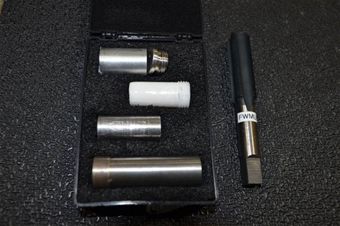A newly released independent review of the Department of Defense (DOD) nuclear enterprise by two retired military leaders, Air Force General Larry D. Welch and Navy Admiral John C. Harvey, Jr., concludes—to no one’s surprise—that there are many problems. The review, which was completed in June but released just last week, was prompted by a series of embarrassing incidents over the past year or so including ICBM launch officers caught cheating on exams, a general relieved of command after drunkenness and inappropriate behavior on a trip to Russia, and the deputy chief of the U.S. Strategic Command removed from his post after passing counterfeit gambling chips at a local casino.
The latest review focuses mainly on management and personnel issues in the nuclear forces. It finds that there are morale problems throughout the nuclear forces, and that a culture of micromanagement, over-inspection, and general neglect of the personnel and facilities are to blame. Another, internal, review (which remains classified) reportedly contains many similar conclusions, as have several past studies.
The Wrench in DOD’s Nuclear Works
While not in the public report itself, Secretary of Defense Chuck Hagel confirmed a tidbit that has found its way into press coverage: the three U.S. ICBM sites for some period of time had only one wrench among them that could be used to attach and detach warheads from these missiles. They sent this tool by Fedex from one site to another as it was needed. Hagel helpfully supplied the information that now, this problem has been fixed. Each site once again has its own wrench, and in the future, they will each have two!

The “wrench” in question: actually a “heat shield counter-bore tool”. (Source: Air Force Global Strike Command)
In its defense against the attention that the wrench situation has gained in the press, DOD noted that the implement in question was not actually a “wrench” but a “Heat Shield Counter-bore Tool” and that it was rarely used. Chances are that the missing wrenches were never a big deal. Other neglected items, however, like replacing helicopters for security forces, and repairing blast doors on missile silos that wouldn’t close, may be more serious.
Yet even as we are unable or unwilling to spend the money required to maintain the forces we already have, plans call for spending hundreds of billions on newer versions of these systems. The plans include upgrades for each leg of the triad: a replacement for the Minuteman III ICBM, a new fleet of nuclear missile submarines, and a new nuclear-capable bomber, along with upgraded warheads and bombs.
Spending $7.5 billion over five years to ensure that the weapons we have are maintained to be safe and secure, and to improve the morale of those who work with them, is sensible. But spending $10-20 billion for an unneeded new cruise missile (the long-range standoff weapon, or LRSO) or $84-125 billion to replace the Minuteman III ICBM (at least twice the cost of simply modernizing the existing missile) is not. Nor is spending $100 billion for a new fleet of 12 ballistic missile submarines, when 8 could do the job and save $16 billion over the next ten years, and $30 billion more in the long run. The constrained budget environment in which this spending would take place makes these proposals even more absurd.
Despite this, recent reports indicate that DOD will continue to attempt to deny reality by creating new accounts for nuclear forces, outside the regular budgets of each of the military services. This means these weapons would no longer have to compete for funding with conventional weapons in the Air Force and Navy budgets. What it does not change is the fact that the money to fund these accounts still has to be found somewhere.
Money Does Not Equal Morale
There’s another problem here too, however. The morale problems facing the troops who are part of the nuclear enterprise—particularly the missileers who spend long hours sitting in underground capsules in case the order to launch ever comes—are unlikely to be fully resolved by any changes that DOD can make. Secretary of Defense Chuck Hagel stated in discussing the review that in order to change the situation, “we must change the cultural perception of a nuclear enterprise…We must restore the prestige that attracted the brightest minds of the Cold War era, so our most talented young men and women see the nuclear pathway as promising in value.” To do this, DOD is taking a number of steps recommended by reviews and the “Force Improvement Program”—a survey that collected suggestions from the airmen themselves. These steps include upgrading the general in charge of the Air Force’s nuclear forces, adding incentive pay and medals for missileers, hiring more workers to lessen the burden on the existing forces, and updating the facilities where the airmen work.
But Hagel’s assessment only draws further attention to the real issue—we are no longer in “the Cold War era.” We are in the era of al Qaeda, ISIS, and Ebola, and it makes sense that those who work with nuclear weapons understand this. They have not been part of the wars in Afghanistan or Iraq that have been the formative experience for the military in recent years, and—we all sincerely hope—they are unlikely ever to be called on to carry out their assigned mission. Lieutenant General James Kowalski, Commander of the Air Force Global Strike Command, which has responsibility for our nuclear bombers and ICBMs, recognized this in a speech he gave last year, saying that “For the past 15 years it’s been pretty clear…we’re really not worried….In fact I would tell you that the greatest risk to my force is an accident. The greatest risk to my force is doing something stupid.”
